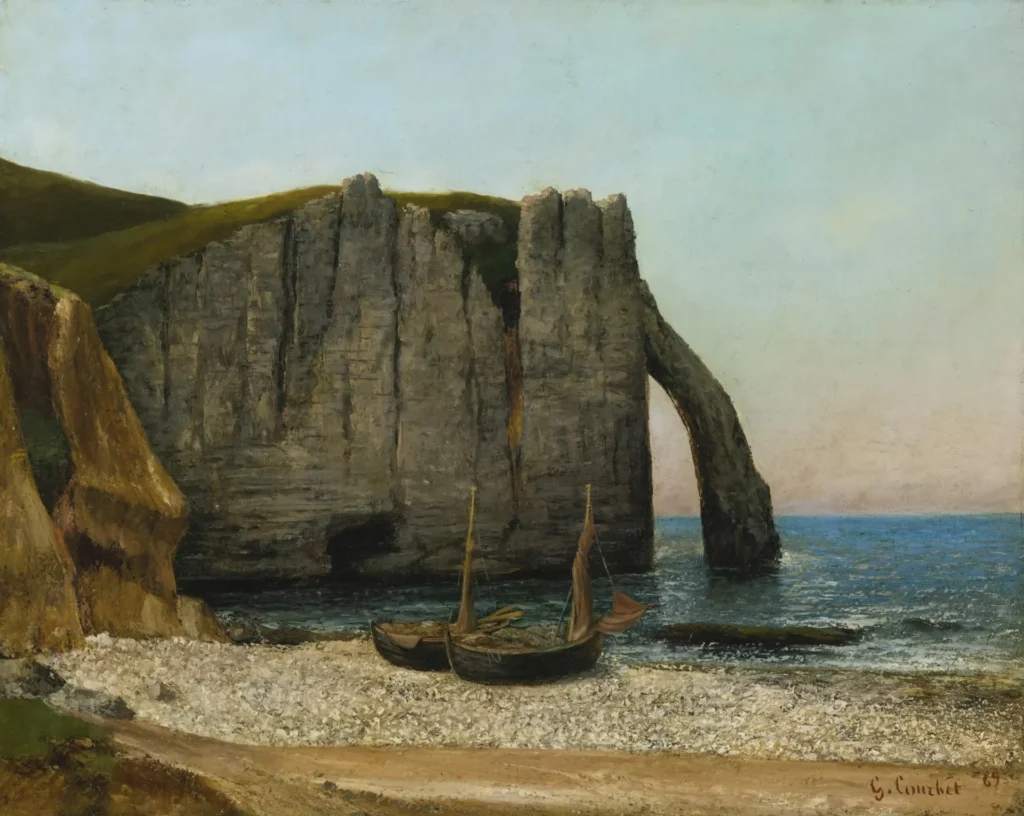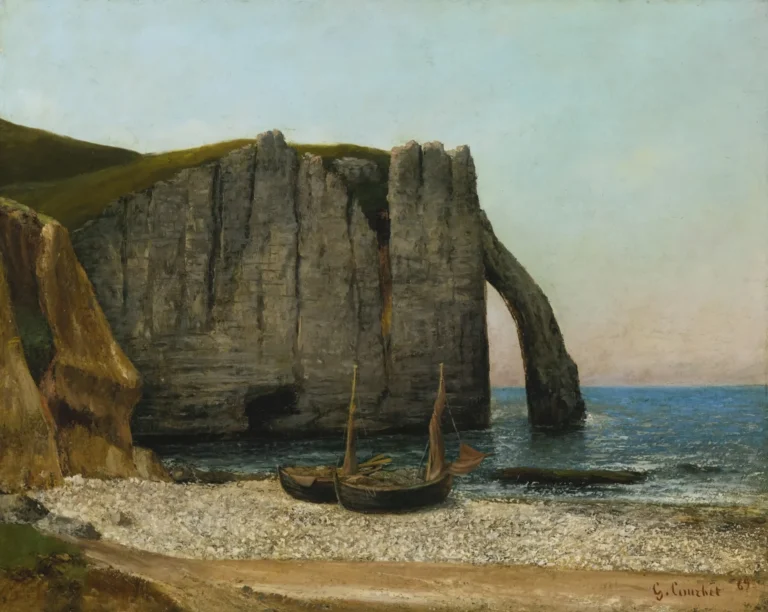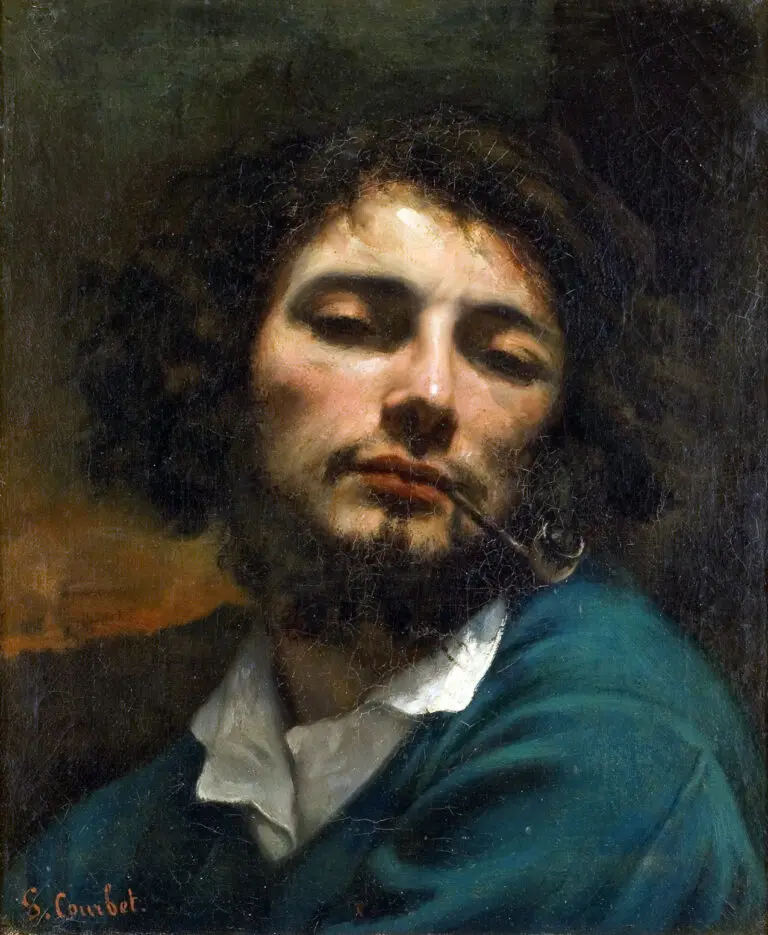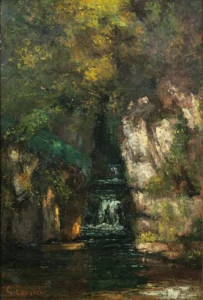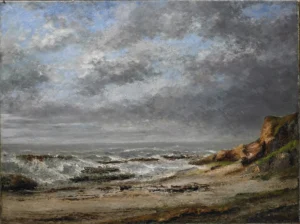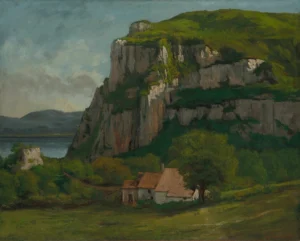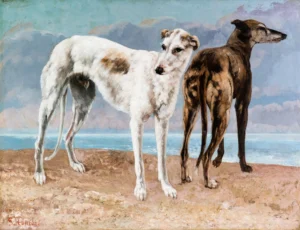Falaises d’Étretat (1869)
Gustave Courbet's 'Falaises d’Étretat,' painted in 1869, is a remarkable representation of the artist's commitment to realism and his fascination with nature. Set in Étretat, a picturesque Norman town, the work showcases the majestic cliffs and the Porte d'Aval arch, emphasizing the relentless beauty of the natural landscape. Notably devoid of human figures, the painting focuses on the raw power of the land and sea, echoing Courbet's pioneering influence on the Impressionist movement through his innovative use of light and atmosphere.
Year 1869
About the Artwork
Commissioned in 1869 during Courbet's extended stay in the coastal town of Étretat, 'Falaises d’Étretat' reflects not just a moment captured on canvas but also a significant artistic evolution. The cliffs, famously portrayed in several other works by Courbet, represent his thorough observations and the raw truth of nature. The absence of human presence in the painting serves to elevate the natural setting, allowing the cliffs to dominate the canvas. Art critics of the time admired Courbet for his straightforward rendering of these scenes, appreciating the 'free, joyous air' that permeates his works. This painting contributed to Courbet's growing reputation, leading him to become a key figure within the Realist movement, inspiring future artists and establishing a solid foundation for Impressionism.
Did You Know
Liked what you see? Add it to your collection.
Enjoyed reading? Share it.
... continued
The artwork 'Falaises d’Étretat' or 'The Etretat Cliffs' by Gustave Courbet, created in 1869, is a significant piece in his oeuvre, reflecting his realist approach and his fascination with the natural world.
Location and Composition
Courbet painted this work during his stay in Étretat, a small Norman town known for its dramatic cliffs and clear light. The painting focuses on the Porte d'Aval, a striking natural arch in the cliffs. It features the cliffs rising majestically from the sea, with a few fishing boats on the empty beach and minimal human presence.
Realist Approach
Courbet's approach to this painting is characterized by his commitment to realism. He ignored the picturesque aspects of the site and instead emphasized close visual observation of the natural elements. The painting is devoid of people and anecdotal details, highlighting the land, rock, sky, and sea in a straightforward and truthful manner.
Light and Atmosphere
The painting captures the clarity of the air and the limpid light after a storm, which was a hallmark of Courbet's work. The critic Castagnary praised the 'free, joyous air which circulates in the canvas and envelops the details,' reflecting the admiration that future Impressionists would have for Courbet's use of light and freedom.
Artistic and Historical Context
Courbet's work at Étretat was part of a series of landscapes he painted in the late 1860s. These works, including 'The Etretat Cliffs after the Storm' and 'The Stormy Sea,' were exhibited at the Salon of 1870, consolidating Courbet's reputation as a leading figure in the art scene of his time.
Critique and Legacy
The painting was praised by contemporary critics for its simplicity, truthful rendering, and the way it captured the essence of nature without embellishment. This approach was seen as striking, astonishing, and moving, and it contributed to Courbet's influence on subsequent art movements, including Impressionism.




